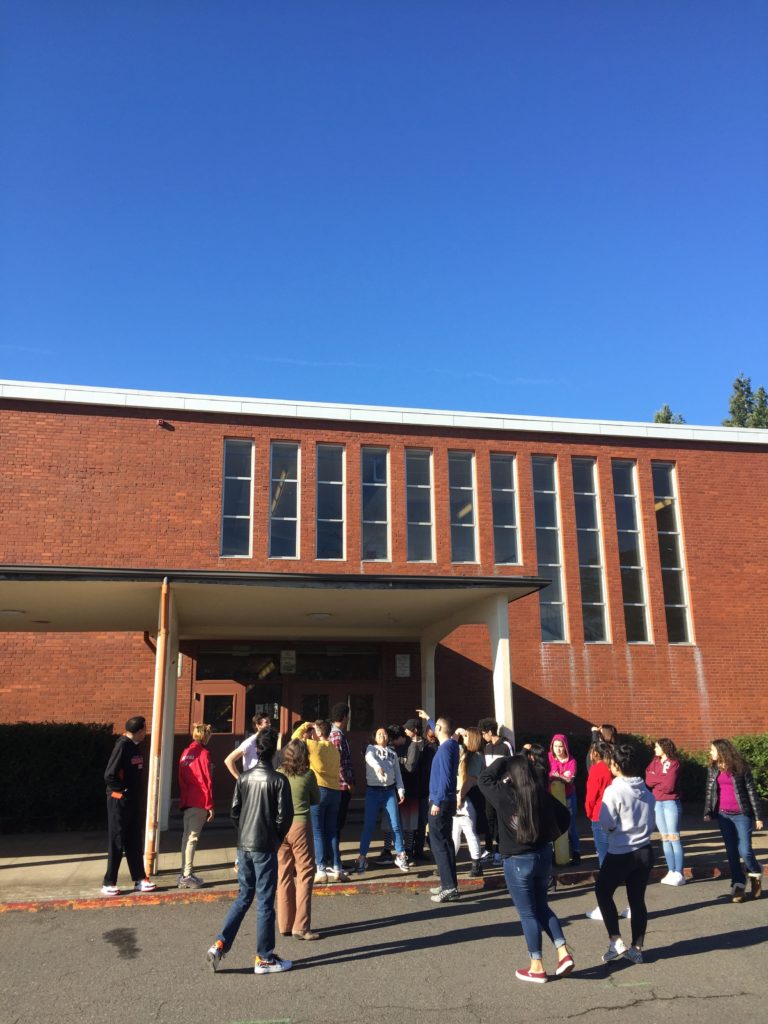When it comes to after-school programs, Your Street, Your Voice (YSYV) is a trailblazer for Oregon “high school students of targeted identities to learn about careers in the built environment, and use design as a tool for social and environmental justice”. [1] The program asks students to consider how they might redesign their neighborhoods through the lens of equity and inclusion activism, and uses the context of a design studio as a catalyst for conversations. YSYV not only empowers students by connecting them directly with design professionals from a variety of backgrounds, it pays them for their participation as a testament to the value of their voice in shaping the built environment.

PMA preservation at PPS Madison High School, 2019.
MENTOR EXPERIENCE
Participating in YSYV as a mentor was important to me because, as an architectural designer, my goal is to provide long-term solutions to challenges for clients and the communities they serve. Providing solutions is increasingly difficult when we as designers do not have the personal lived experience(s) of the persons we are designing for. Empathy for the end user is integral to successful design. Mentoring with YSYV provided me an opportunity to see design challenges from different perspectives. As I grow in my career, I want to encourage a more diverse incoming generation of designers in any way that I can, and I want them to know that I have just as much to learn from them as they do from me.
As I worked with students to develop their projects and listened at their final presentations, I was so impressed with the scope of their consideration for current issues. For instance, some students who chose to redevelop a park accounted for the safety and security of protestors who might use that space to gather. It was inspiring to see how individuals lived experiences were reflected in their projects, and how they chose to address issues that directly affect them. Many of the proposals were also realistic and attainable for the communities they targeted, an extremely important facet of making design accessible to everyone. Many students carried out this work despite technology-related hinderances that were out of their control. For instance, poor internet connections prevented several students from turning on their video during Zoom sessions, which directly impacted their ability to share and develop their projects with their peers and mentors. Despite the obstacles created and exacerbated by the pandemic, and subsequently remote learning, the students were able to create an extremely supportive, safe, and open virtual environment in which to share their opinions and ideas. It gives me incredible hope and anticipation for the near future of the AEC industry.
HOW TO SUPPORT YOUR STREET, YOUR VOICE
If you are interested in supporting Your Street, Your Voice and other associated programs, visit their website to sign up as a mentor or make a donation. I plan to participate in future sessions, and I am beyond excited to see where this experience takes these young, talented designers. If nothing else, I hope I can be a resource to students who are considering and have questions about the fields of architecture and historic preservation.
1. About. (n.d.). Retrieved December 24, 2020, from https://www.yourstreetyourvoice.com/about
Written by Skyla Leavitt, architectural designer.
